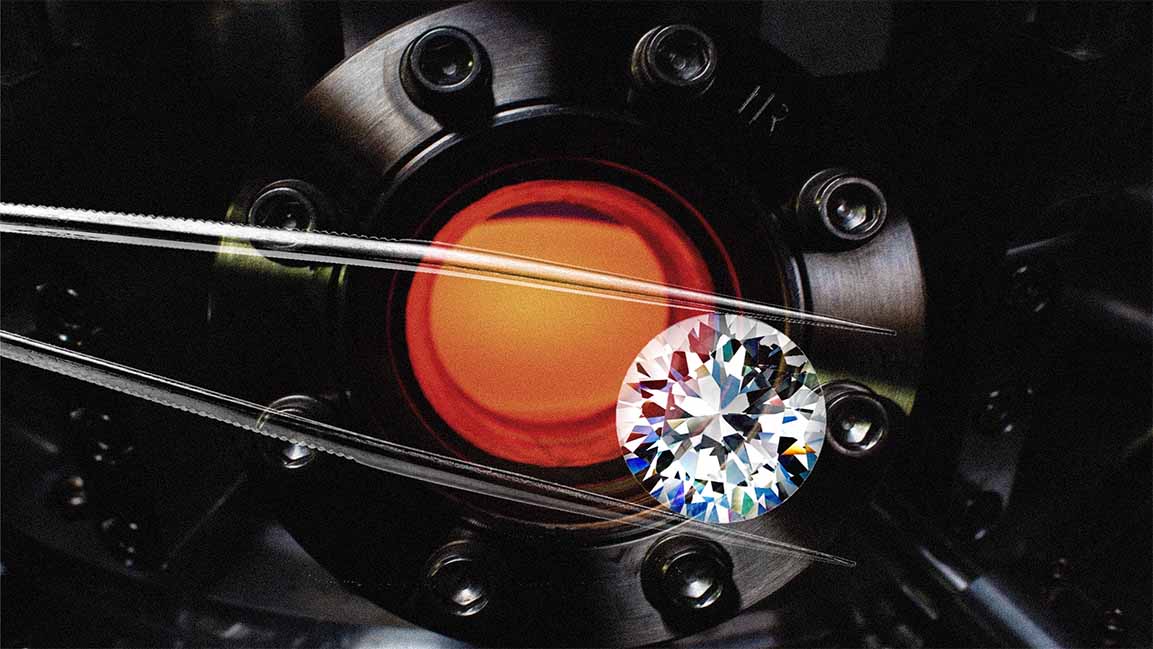- | 9:00 am
Leonardo DiCaprio backed company has partnered with this UAE startup
By incorporating carbon-neutral, conflict-free diamonds into a new fine jewelry line, the startup founder says technology can make sustainable luxury possible

They aren’t new. For decades, lab-grown diamonds have been used in industrial applications, but their impurities have kept them out of the fine jewelry sector. In the past few years, a few companies started making sparkling stones hard to tell from the real thing. They match cut, clarity, color, and carat exactly like what you’d find at Tiffany’s or De Beers. And, they are conflict-free and eco-friendly.
“Lab-grown diamonds are the fine jewelry industry’s future. With the help of technology, sustainable luxury is possible,” says Basma Chaieri, Founder of Etika Jewels. This Dubai-based sustainable jewelry startup recently partnered with Diamond Foundry, a lab-grown diamond manufacturer backed by Leonardo DiCaprio, the star of the movie Blood Diamonds.
“Our mission is to convince more and more luxury shoppers about the value and beauty of top-quality lab-grown diamonds,” says Chaieri, as the brand incorporates carbon-neutral, conflict-free diamonds into a new fine jewelry line.
With lab-grown diamonds having the same chemical and physical properties as mined diamonds, consumers can get a bigger and better-quality diamond with the same, or less, budget, she says.
In the past few years, luxury brands’ attitudes towards lab-grown diamonds have been shifting, yet, selling lab-grown diamonds currently represents about 7% of the specialty diamond jewelry market.
Despite the schisms in the jewelry industry, Chaieri says that the diamond industry will have to move away from natural stones because of the dwindling supply. By 2040, it’s anticipated that the global production capacity of mined diamonds will be cut in half.
For an industry that relies on the supply and demand of diamonds, an option to grow the precious stone by employing technology can imply a devaluing of the gem. But that’s not the case. Industry leaders like DeBeers, now with its lab-grown diamond brand, Lightbox, and LVMH Luxury Ventures (though the Pandora jewelry brand), are investing in lab-grown diamonds.
Even celebrities are also endorsing the trend. Rapper Drake bought musician Frank Ocean’s lab-jewelry brand Homer for $1.9 million last year. Lady Gaga and Penelope Cruz are some names who have worn the stones to walk the red carpet.
MINED OR GROWN – A DIAMOND IS A DIAMOND
But critics still question whether lab-grown diamonds are precious.
Visually, there is not much difference between a natural diamond and a lab-grown one.
“The difference is in the source,” says Chaieri. It takes six to ten weeks to create a diamond in the lab, depending on its size. It grows to one carat in approximately ten days and three carats in a month or so. “Technology replicates in days or weeks what nature can do in 1 billion to 3.3 billion years,” she says.
Also, lab-grown are fundamentally more ethical than mined diamonds as it is easier to trace their provenance.
When it comes to the carbon footprint of lab-grown diamonds, Chaieri says her collaboration with The Diamond Foundry will enable the sale of diamonds with zero carbon emissions based on a hydropower-led process.
THE FOUR Cs FOR LAB-GROWN DIAMONDS
Both natural and lab-grown diamonds undergo the same rigorous grading process based on four parameters, known as the Four Cs, — color, cut, clarity, and carat. It’s the universally approved system of diamond quality evaluation. “Traditional diamonds take millions of years to develop in the earth’s depths, while lab-grown diamonds are made in the lab with advanced equipment replicating natural conditions of extreme heat and pressure in a highly controlled manner,” says Chaieri.
A perfectly cut and internally flawless diamond is expensive, whether traditional or lab-made. “Similarly to natural diamonds, lab-created diamonds have varying amounts of internal flaws or ‘inclusions.’ The strong crystalline bonds allow very few chemical elements to enter the dense structure of a diamond. Even in tiny amounts, if they enter it, they create inclusions that affect the diamond’s clarity and color,” says Chaieri.
The Gemological Institute of America and the International Gemological Institute grade mined and lab-grown diamonds with the same criteria, assessing these quality parameters.
Technically, the on average better quality of lab-grown diamonds is explained through the higher possibility of traces of a diamond’s nitrogen, responsible for the yellowish tint in many mined diamonds. Lab-grown diamonds, especially those created with the Chemical Vapor Deposition (CVD) method using carbon-rich gas (such as methane) in a vacuum chamber, hardly contain any nitrogen in their structure and therefore are colorless. These are graded as “the purest of all diamonds,” representing only 2% of those found in nature, says Chaieri.
So could this signify a revolution in the diamond industry? “It certainly is a start,” says Chaieri.
It’s not one against the other in Chaieri’s eyes. “Industry leaders see sustainable lab-grown diamonds as the future, as many worldwide are taking action to save the planet,” she says.
“Lab-grown diamonds lead the way to eco-friendly, ethical practices. I hope the mining industry will embrace innovation and sustainability.”












































